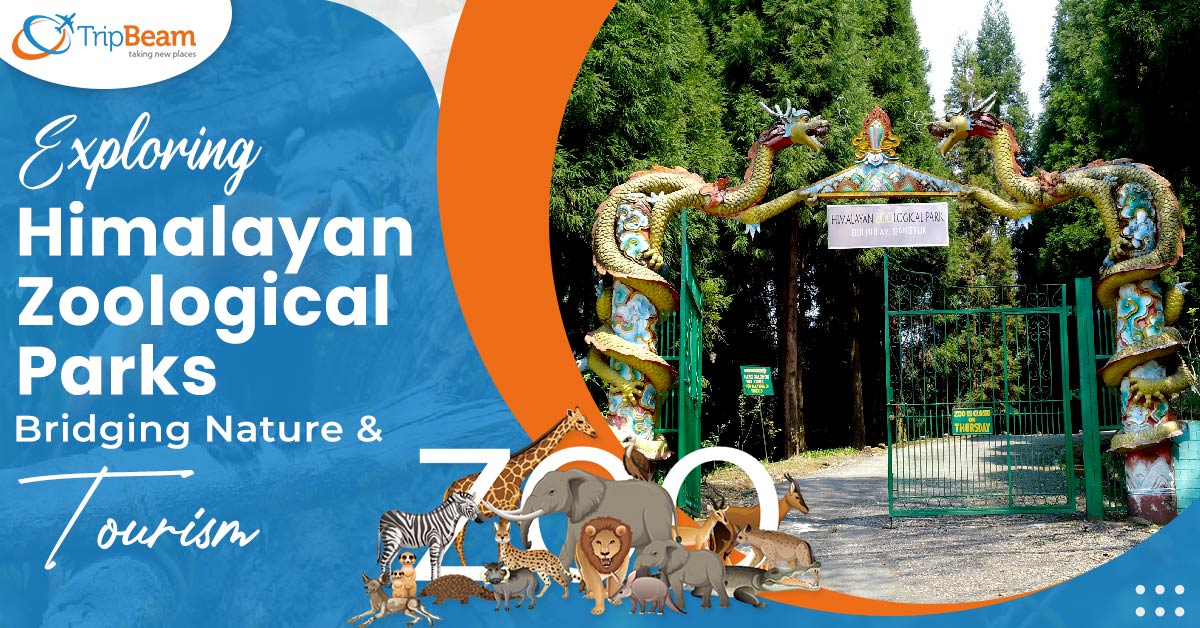
People love the Himalayas. Essentially, we have been captivated by its splendor, mesmerized by the experiences it offers, thrilled at the prospect of returning, and frequently humbled by its inherent power. Every year, miles of forest area are destroyed, rivers’ courses are altered, and roads carrying enormous numbers of people to unknown terrain are constructed in the name of development. But before we rush off and vacation, we should consider whether we are unintentionally helping or hurting any species.
In this post, we aim to provide readers with additional information about Himalayan Zoological Parks and how they educate visitors about animals. We cover the Darjeeling and Gangtok Himalayan Zoological Parks. Thus, if you are booking international flights from USA to India, we hope that visiting these parks will be a part of your trip to North Sikkim or Darjeeling.
Himalayan Zoological Park, Gangtok
The Himalayan Zoological Park in Gangtok, which is close to the city but teeming with wildlife, was established in Bulbuley in 1991 using modern zoo principles.
The animals must be kept in an environment that is very comparable to nature for their physical and mental well-being (they are not imprisoned, unlike the zoos we are accustomed to). Many endangered wildlife species, including the Himalayan bear, Tibetan wolf, Himalayan monal, clouded leopard, blue sheep, red panda, Indian civet, and snow leopard, may be found in this region.
It is exceedingly difficult to see a red panda or a snow leopard in the wild—it takes several days of arduous hiking in these areas. Still, they are visible to the average person here. The gates to a valuable wooded area close to the city limits are guarded by two ornamented dragons. You enter the zoological park after a hard climb, where the dragons keep a close eye on you. After obtaining entry passes, you are practically allowed to wander around the area at your leisure.
There is a watchtower a short distance up the pathway where you may take in the breathtaking views of this area. If luck is on your side, you might be able to see the stunning and captivating Kanchenchunga range from the watchtower on a clear day.
How to Reach
You can include a visit to the Zoological Park in your general day tour itinerary because it is conveniently located near Gangtok City. The zoo’s entrance is across from Ganesh Tok, a well-known tourist destination in this area. Furthermore, you can browse Tripbeam to grab the cheapest business class flights to India from USA.
Quick Facts About the Zoological Park
- Gangtok is 5 miles away from Bulbuley.
- The 250-hectare Zoological Park is located at an elevation of 1780 meters.
- All day, except on Thursday, the Zoological Park is open.
- It is open for visitors from nine in the morning to four in the afternoon.
- The finest season is from March to May. late September till the middle of December
The government takes good care of the park. Vehicles enter the park via the dragon-adorned gate and exit through a different one. There is a modest snack and beverage area in the parking lot.
Himalayan Zoological Park, Darjeeling
Your next Himalayan Zoo is located in the quaint hill town of Darjeeling, only three hours away. Compared to the zoo in Gangtok, Padmaja Naidu Himalayan Zoological Park is a comparatively modest one. Furthermore, because the zoo founders established it in 1958 when contemporary zoo designs were not yet common, they house the animals in cages.
This zoo still hosts a lot of threatened species of birds and animals. It also supports education and conservation. Worldwide, people know that captive breeding programs successfully breed snow leopards, Tibetan wolves, and endangered red pandas.
You can walk quickly and steeply from the road to the ticket booth. You can spot carnivores like red pandas, Himalayan black bears, barking deer, Indian and Siberian tigers, snow leopards, clouded leopards, and Tibetan wolves by following the naturally created routes inside.
How to Reach
The zoo, which is roughly 2 kilometers from Mall Road in Darjeeling, is open for visits as part of day trips from the city. It takes three hours to go to Darjeeling from the New Jalpaiguri (NJP) junction by private or shared taxi, or you can take the UNESCO heritage toy train. Also, make sure to check out Tripbeam.ca to grab the cheapest flights from Canada to India.
Quick Facts About the Zoological Park
- Every day (excluding Thursdays) is open for visitors at Padmaja Naidu Zoological Park.
- 8:30 a.m. to 4 p.m. is when visitors are welcome.
- It costs 100 INR for foreigners and 60 INR for Indians to enter. For children under the age of six, it is free. There is a 10 INR camera fee.
- You can visit the Bengal Natural History Museum, the Himalayan Mountaineering Institute, and the zoo with the same ticket.
- The zoo occupies 65 hectares of land and sits at an altitude of 2150 meters.
- Season of choice: March through June. From late September until January.
There is an adoption schedule for each animal in the zoo, which varies from quarterly adoptions to annual adoptions. You can support the conservation program and obtain a tax exemption by paying for the adoption of an animal.
Bottom Line
Ecotourism promotes conservation through raising awareness and educating people. These public zoos aim to foster compassion for animals and possibly even take some action toward wildlife conservation. Therefore, the next time you visit the Himalayas, make sure you bring your water bottle and silverware and avoid using single-use plastics. Try to bring it back so that you can recycle or dispose of your rubbish correctly. Also, if you are looking for last minute flights to India from USA, make sure to visit Tripbeam, the best travel website.

